Ventúrska 9,
Zichy´s palace
Bratislava
tel:
+ 421-2-2070-7501
office@bratislava-info.sk
Maximilian II. (1564 - 1576) 8.IX.1563
.jpg)
he son of Emperor Ferdinand I Habsburg and Anne of Bohemia and Hungary. Maximilian II was considered to be an amiable, educated man, skilful in speech, with sense of humour, who received good education. In 1548 he married his cousin Mary, the daughter of Spanish king Charles V.
He was the first ruler crowned in Pressburg on September 8 1563 in St. Martin´s Cathedral as the king of Hungary and Bohemia. His coronation represented the example of coronation celebrations of future monarchs. More than four thousand knights, noblemen and dignitaries from Austria, Hungary, Styria, Carynthia, Moravia, Bohemia and Silesia participated there. Coronation procession went from archiepiscopal palace, headed by emperor Ferdinand I. Coronation ceremonies and service lasted several hours. After the coronation the ruler with the crown on his head went to the Franciscan church, where he dubbed many Hungarian squires knights.
Another stop of the procession was the Michal´s Gate. Here the king repeated his vow publicly, in front of Hungarian classes greeting him enthusiastically. According to the example of coronation city of Belgrade on the Danube´s bank there was risen a coronation hillock climbed by the king on a horseback. He drew his sword and cut with it in direction of four cardinal points. The most intensely he cut towards the east of the country, which was occupied by Turks. Thus he symbolically expressed his protection over the kingdom. This act was accompanied by drumbeating, fanfares and shooting of mortars. The procession then returned to archiepiscopal palace, where the celebrations ended with lunch. During his reign Maximilian II considerably helped to maintain religious peace as well as long-lasting calmness in the realm.
Marie (Maximilian`s wife) 9. IX.1563

The daughter of Emperor Charles V and Isabella of Portugal. The marriage with Maximilian meant the beginning of Spanish-Austrian royal relations. The coronation of the queen took place on the second day after the coronation of her husband, on 9 September 1563. The celebrations were attended by knights´ games, tournaments, fireworks, races and dances. They ended on September 16th. With the coronation of Maximilian II and his wife Marie started almost three-hundred-year-long tradition of Pressburg coronations. The royal couple had 16 children. The queen played an important role in the politics of Austrian court. After Maximilian´s death she returned in 1576 to Spain, where she led a placid life. She died in 1603, lonely and embittered.
Rudolf II. (1576 -1608) 25.IX.1576
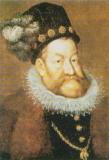 The oldest son of Maximilian II and infante Marie, he is considered to be the most peculiar of all Habsburg rulers. His ceremonial coronation took place on 25 September 1572 in St. Martin´s Cathedral. However, he did not become the king of Hungary by this act, but only after the death of his father Maximilian. As a ruler he was not successful. He was neglecting his regental commitments as well as politics, what led the country into the state resulting in 30-year-war. He loved and protected arts and sciences though. He was interested in black magic and cabbala. He chose Prague for his seat. Thus he became the last ruler of Western empire and created the ongoing myth of Rudolphine Prague.
The oldest son of Maximilian II and infante Marie, he is considered to be the most peculiar of all Habsburg rulers. His ceremonial coronation took place on 25 September 1572 in St. Martin´s Cathedral. However, he did not become the king of Hungary by this act, but only after the death of his father Maximilian. As a ruler he was not successful. He was neglecting his regental commitments as well as politics, what led the country into the state resulting in 30-year-war. He loved and protected arts and sciences though. He was interested in black magic and cabbala. He chose Prague for his seat. Thus he became the last ruler of Western empire and created the ongoing myth of Rudolphine Prague.
Matthias (1608 – 1619) 19.XI.1608
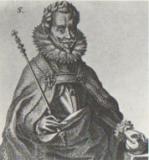 The son of Maximilian II and infante Marie. He was considered to be highly open ruler with
The son of Maximilian II and infante Marie. He was considered to be highly open ruler with very strong political ambitiousness developed already during his childhood. He was crowned Hungarian ruler already during the reign of his older brother Rudolph II, on September 19 1608. In 1611 he married his cousin, archduchess Anne. Despite his great ambitiousness his reign was not very successful. The other way around. With Matthias´ name are linked such events as the total end of a permanent imperial residence in Prague and the beginning of tragic class uprisings.
Anna (Matthias wife) 25.III.1613
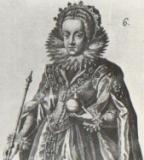 The daughter of archduke Ferdinand II of Tyrol and Anne Katharine Gonzago of Mantua. After the marriage with her cousin Matthias II she too was crowned Hungarian queen on March 13. It was the first coronation carried out in the spring season and the first wife of the king, who got a gift from Hungarian classes, several thousands of golden ducats, given till that time only to kings.
The daughter of archduke Ferdinand II of Tyrol and Anne Katharine Gonzago of Mantua. After the marriage with her cousin Matthias II she too was crowned Hungarian queen on March 13. It was the first coronation carried out in the spring season and the first wife of the king, who got a gift from Hungarian classes, several thousands of golden ducats, given till that time only to kings.
Ferdinand II. (1619 – 1637) 1.VII.1618
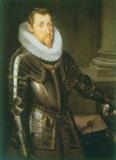 The second son of archduke Charles II of Styria and Margaret of Bavaria, cousin of king Matthias II. King Matthias did not have children and therefore Hungarian congress on his proposal of Hungarian king and Matthias´ successor approved archduke Ferdinand II, who was crowned on July 1 1618. The new king was crowned by Esztergom archbishop Peter Pázmány and paladin Sigismond Forgacz. The coronation was held at times of Turkish soldiery menace following by the uprising of Hungarian nobility. Therefore the custodians of St. Stephen´s Crown transposed coronation jewels to the castle of Essed in Hungary. In 1622 they were again returned to the Pressburg castle. After his wife´s death Ferdinand II married his cousin, princess Eleanore, daughter of duke Vicenzo Gonzago of Mantua. He was regarded as a competent politician and diplomat. At the rough time of 30-year-war he managed to enforce his concept of absolute monarchy and create the basis of internal integration of Central European Habsburg Empire.
The second son of archduke Charles II of Styria and Margaret of Bavaria, cousin of king Matthias II. King Matthias did not have children and therefore Hungarian congress on his proposal of Hungarian king and Matthias´ successor approved archduke Ferdinand II, who was crowned on July 1 1618. The new king was crowned by Esztergom archbishop Peter Pázmány and paladin Sigismond Forgacz. The coronation was held at times of Turkish soldiery menace following by the uprising of Hungarian nobility. Therefore the custodians of St. Stephen´s Crown transposed coronation jewels to the castle of Essed in Hungary. In 1622 they were again returned to the Pressburg castle. After his wife´s death Ferdinand II married his cousin, princess Eleanore, daughter of duke Vicenzo Gonzago of Mantua. He was regarded as a competent politician and diplomat. At the rough time of 30-year-war he managed to enforce his concept of absolute monarchy and create the basis of internal integration of Central European Habsburg Empire.
Eleonora (Ehefrau von Ferdinand II.) roku 1622
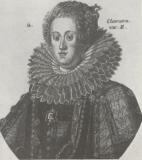
The youngest daughter of the duke of Mantua. She married Ferdinand II in 1622. In the same year she was crowned Hungarian queen in St. Martin´s Cathedral, on 26 July1622, shortly after the coronation jewels had been returned to Pressburg. The coronation took place in the dark period of 30-year-war and troubles vexing surrounding kingdoms as well.
Marie Anna (1. Ehefrau von Ferdinand III.) 14.II.1638

The daughter of Spanish king Philip III and archduchess Margaret. The first wife of Ferdinand III, son of Ferdinand II, who was crowned Hungarian king in Sopron, because Pressburg was struck by plague. However, the coronation of Marie Anne was held again in Pressburg, in winter, on 14 February 1638. It was attended by many visitors from Spanish royal court.
Ferdinand IV. (1646 – 1654) 16.VI.1647
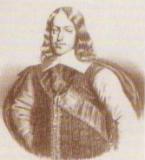
The son of emperor Ferdinand III and infante Mary Anne. In 1646 his father Ferdinand III decided to hand the crown over to minor son. The young prince was only thirteen years old. At that time the coronation jewels were hidden away from the classes´uprising of George Rakoczi in fortified castel of Gyor, wherefrom they were taken in 1646 to the coronation town. However, the coronation took place as late as on June 16 1647, because of sudden death of queen Mary Anne. The coronation celebrations were marked by great fire in the town centre. The young ruler did not rule for long, because he suddenly died at the age of 20. His early death caused dangerous crisis concerning the question of his successor.
Marie Eleonora (3. Ehefrau von Ferdinand III.) (1646 – 1654) 16.VI.1647

Daughter of duke Charles III Gonzago of Mantua and Mary Gonzago. She married a double widower, emperor Ferdinand II, who had her crowned Hungarian queen on 6 June 1655. They had four children. Eleanore was taken for very educated woman, with literary and musical interests. She even became the head of literary academy founded by Ferdinand III according to the Italian example. Later, as a widow, she played a central role at the imperial court of her stepson, emperor Leopold.
Leopold I. (1657 – 1705) 27.VI.1655
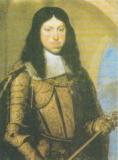
Younger son of emperor Ferdinand III and Mary Anne. He was crowned king on 27 June 1655, not even 15 years old. The coronation ceremony was carried out according to traditional ceremonies. He became one of the most important Habsburg rulers of his period. He helped to establish a university in Innsbruck, Olomouc and Wroclaw. During his rule baroque Vienne started to be built. But Turks still posed the danger for Hungary. Therefore Leopold decided to transfer coronation jewels from Pressburg castle first to Vienna, then to Linz and finally to fortified Passau. After the Turkish menace had disappeared, jewels were transferred back to Pressburg castle and Pressburg became the seat of Hungarian Crown.
Joseph I. (1705 – 1711) 9.XII.1687

The son of emperor Leopold I and Eleanore Falck of Neuburg. After the final expulsion of Turks from Hungarian territory, king Leopold I. in October 1687 definitely enforced the birthright of Habsburg to Hungarian Crown. Thus originated the right of succession, lasting almost for 150 years. Joseph I was crowned Hungarian king as 9 years old on 9 December 1687. However, he began to rule only after his father’s death in 1705. During his rule he modernised central government and stabilised finances. He is known as a supporter of music and art. But he reigned just for incomplete six years and died on 17 April 1711 without a descendant.
Karl III. (1711 – 1740) 22.V.1712
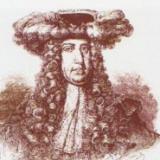
The son of emperor Leopold I and Eleanore Falck of Neuburg, younger brother of Joseph I. In 1911 on his way from Spain he was also crowned Roman emperor. He became Hungarian king, Charles VI, on May 22 1712. Already before his coronation he pledged that Hungarian crown be placed exclusively in Hungarian territory and never transferred abroad. His coronation was carried out according to the traditional ceremony. The celebration took place in archiepiscopal palace according to the Spanish etiquette. The king at the table ate alone. They were served by members of grand family of Esterhazy and Palffy. After the celebration the king returned to the castle, where he admitted and endowed with opulence the most important noblemen. Since he did not have a descendant on the spear-side, because his first-born son died shortly after the birth, he issued a pragmatic sanction giving his daughter Maria Therese the right of succession. This decision was approved by Czech and Hungarian classes. The right of succession of Habsburg women was adopted at Hungarian congress in 1722.
Elisabeth Christina (Ehefrau Karol III.) 18.X.1714

German princess, the wife of king Charles VI was crowned Hungarian queen in October 1714. She gave birth to four children. The first-born son died shortly after the birth. The eldest Maria Therese later became an important Austria-Hungarian sovereign.
Marie Theresie (1740 – 1780) 25.VI.1741

The eldest daughter of Charles III and princess Elizabeth Christina. Her coronation for Hungarian queen was held on 25 June 1747. Already before the coronation she gave birth to three daughters and a son Joseph, the fothcoming successor to the throne. She had sixteen children. Description of Maria Therese’s coronation was preserved in all details. It confirms that her coronation was a grandiose event. She was crowned as the last woman according to the royal ceremony – with sceptre, mound, sword and St. Stephen’s Crown put on her head as to a king. On her way to the coronation town she was accompanied by her husband Francis Stephen of Lotharingia. At her arrival she was welcomed with bell pealing and cannon shooting. On the coronation day her procession went through the town towards the Danube and through Vydricka Gate directly to the foreground of St. Martin´s Cathedral. The coronation was carried out as the choice of a king and not a woman – queen. She observed the coronation tradition after the end of service as well. She passed through the town in a carriage, accompanied by mundane and clerical dignitaries. She dubbed the noblemen knights, greeted common people on the coronation hillock, symbolically expressed her determination to protect the country against enemies. The celebration was held at the castle. She performed her commitments with decidedness and statesmanlike foresight.
Leopold II. (1790 – 1792) 15.XI.1790
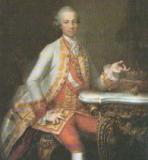
The third son of Maria Therese and emperor Francis Stephen of Lotharingia. Thanks to his thorough reformatory policy he was called „the duke of peace“, „the king of shepherds“ and „Leopold the Wise“. After the death of his brother Joseph II he let himself crowned Hungarian king without any hesitation. The coronation was held on 15 November 1790. However, Leopold II ruled very shortly. He died two years later in 1792.
Marie Louisa (3. Ehefrau von Franz I.) 7.IX.1808
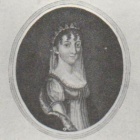
The youngest child of archduke Ferdinand, governor-general of Austrian Lombardy, and Marie d´Este. She was born in Verona. In 1808 she married a double widower, emperor Francis I. Their marriage was happy, but childless. She took care of emperor’s children from previous marriages. On 7 September 1808 she was crowned Hungarian queen. It was the time when Napoleon’s army was victoriously crossing Europe. Francis I had to give up his title of Roman emperor and even give his daughter Mary Louise to marry Napoleon. Mary Louisa never reconciled with that marriage. She was very much engaged in politics. She died at the age of 29.
Karoline Augusta (4. Ehefrau von Franz I.) 25.IX.1825
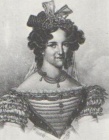
The daughter of Bavarian king Maximilian Joseph and Wilhelmina Augusta of Hesen and Darmstadt. She was crowned Hungarian queen on 25 September 1825 in St. Martin´s Cathedral in Pressburg. On the occasion of this coronation there was raised a floating bridge over the Danube standing on 23 boats. It served its purpose for several years and was named in honour of queen the bridge of Carolina Augusta. The empress was regarded as an educated, pious and beautiful woman. After her husband’s death till her own death she was taking care of the young, poor, sick, establishing spiritual foundations and was engaged in many other activities.
Ferdinand V. (1835 – 1848) 28.IX.1830
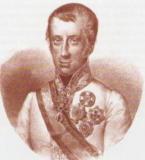
The eldest son of emperor Francis II, called „Ferdinand the Gracious“, and princess Maria Therese of Naples and Sicily. He started to be engaged in politics in his older years. He appeared in public for the first time as 25 years old. He was crowned Hungarian king on 28 September 1830, still during the life of his father, emperor and king Francis I. But this coronation had a special significance for Bratislava, because it meant the end of almost 300- year-period of Pressburg´s coronation celebrations. Ferdinand himself died at the age of 83 at Prague castle.













































